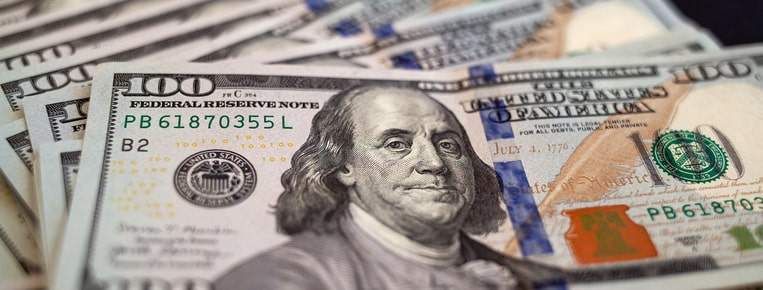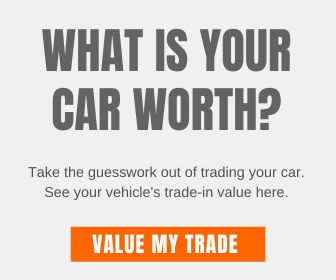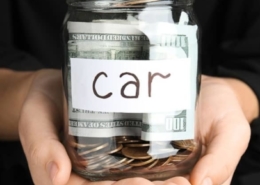How Car Dealerships Make Money
The many ways a car dealership makes money.
When you walk into a car dealership, you might be dazzled by the shiny cars on display and the eager salespeople ready to assist you.
But have you ever wondered how car dealerships make money?
Let’s take a moment and explore the various ways car dealerships generate revenue and stay profitable in a highly competitive industry.
So, buckle up and join me on this journey to uncover the secrets behind the financial success of car dealerships.
Car Buying Tip: Finding an affordable vehicle in today’s market can be daunting. However, using free online car-buying tools, you can effortlessly request free quotes from multiple dealers, allowing you to compare local prices and secure a fantastic deal.
Understanding the Business Model of Car Dealerships
Car dealerships act as intermediaries between automotive manufacturers and consumers.
They purchase vehicles from manufacturers at wholesale prices and sell them to individual customers at a markup.
This markup allows dealerships to cover their operating expenses and make a profit.
However, the revenue generated from vehicle sales is just one aspect of their overall business model.
Revenue Streams of Car Dealerships
The revenue streams of car dealerships encompass vehicle sales, financing, leasing options, and after-sales services.
Vehicle Sales
The primary source of revenue for car dealerships is the sale of new and used vehicles.
When a customer purchases a car from a dealership, the dealership earns a profit from the difference between actual dealer cost and retail prices.
The retail price includes various costs such as transportation, marketing expenses, and dealership overhead.
Financing and Leasing
Car dealerships often provide auto financing options to customers who cannot afford to purchase a vehicle outright.
By partnering with financial institutions, dealerships offer loans and leasing arrangements to facilitate car purchases.
They earn money through the interest charged on these loans and by leasing vehicles for a fixed period.
After-Sales Services
Car dealerships also generate revenue through after-sales services. These services include routine maintenance, repairs, and parts sales.
By offering servicing and repairs, dealerships ensure customer satisfaction and create additional revenue streams.
Customers often prefer returning to the dealership for servicing, which boosts customer retention and revenue.
Dealer Holdback and Dealer Cash
New car pricing can be a complex process, but understanding the concepts of dealer holdback and dealer cash can provide clarity.
While consumers often look at the invoice price and wonder how dealers make a profit, two additional sources of manufacturer money come into play.
Dealer Holdback
Dealer holdback refers to the amount the manufacturer pays the dealer after a car is sold, typically 1% to 3% of the invoice or sticker price.
For instance, on a $50,000 car, the holdback can represent $500 to $1500. This allows dealers to sell cars at or below the invoice price while covering their business costs (such as advertising and sales commissions).
It’s important to note that while holdbacks exist, dealers are not typically open to negotiation during price discussions.
Dealer Cash
On the other hand, dealer cash is a bonus incentive manufacturers offer to encourage dealers to sell vehicles quickly.
This extra incentive may come into play when clearing out inventory at the end of a model year to make room for new arrivals. Dealer cash is not commonly advertised to the public.
Understanding these concepts can help consumers navigate the complexities of car pricing, although it’s important to note that dealer holdbacks are not negotiable.
By being aware of these factors, car buyers can make informed decisions and better understand how car dealerships operate.
Manufacturer Incentives and Rebates
Automotive manufacturers provide new car incentives and rebates to car dealerships based on their sales performance.
These incentives can include cash bonuses, discounted vehicles, or rewards for meeting specific sales targets.
Dealerships can earn significant profits by capitalizing on these manufacturer incentives.
Trade-Ins and Used Car Sales
Car dealerships acquire used cars when customers trade in their old vehicles while purchasing new ones.
They refurbish these vehicles and sell them in the used car market, generating additional revenue.
Used car sales can be quite profitable, especially if the dealership has a strong reputation and offers reliable used vehicles.
Additional Profit Centers
Besides the main revenue streams mentioned above, car dealerships have additional profit centers contributing to their financial success.
Extended Warranties and Service Contracts
Dealerships often offer extended auto warranties and service contracts to customers.
These add-on products provide additional coverage for repairs and maintenance beyond the manufacturer’s warranty period.
By selling these warranties, dealerships earn extra income.
Insurance and Financing Products
Car dealerships collaborate with insurance companies and financial institutions to offer customers insurance policies and financing products.
They earn commissions or referral fees by selling these products, which include auto insurance, gap insurance, and vehicle financing.
These additional revenue streams help boost the dealership’s profitability.
The Service Department: A Lifeline for Dealerships in Challenging Times
Especially during economic downturns, the service department becomes a crucial source of revenue for many dealerships.
Dealers understand that car buyers will likely return for regular maintenance, providing a continuous cash flow even if the profit margins on new and used car sales are slim.
Commissions also come into play within the service operation. Service advisors often earn commissions on their parts and services, adding to the dealership’s revenue. However, the extent of sales pressure experienced can vary significantly between dealerships.
In harsh economic climates, the service department emerges as a lifeline, ensuring the financial stability of dealerships.
By recognizing the value of ongoing service relationships and implementing commission-based incentives, dealerships can navigate economic challenges and sustain profitability.
Challenges Faced by Car Dealerships
While car dealerships have various avenues to generate revenue, they also face specific challenges that can impact their profitability. Some of the common challenges include:
- Market Competition: The automotive industry is highly competitive, with numerous dealerships vying for customers’ attention. Competing on price, customer service, and the overall car-buying experience is crucial for success.
- Fluctuating Market Conditions: Car dealerships are susceptible to economic changes, interest rates, and consumer buying behaviors. Economic downturns and shifts in customer preferences can significantly impact sales and profitability.
- Inventory Management: Balancing the inventory of vehicles is essential for maximizing profits. Overstocking can lead to increased carrying costs, while understocking may result in missed sales opportunities.
- Technological Advancements: Keeping up with the latest advancements in automotive technology and digital marketing is vital for attracting customers and staying competitive. Dealerships need to invest in training and infrastructure to adapt to changing trends.
FAQs: Answering Your Questions
Are car dealerships the only place to buy a car?
No, car dealerships are not the only place to buy a car. Customers can also explore private sellers, online marketplaces, and car auctions.
Can I negotiate the price of a car at a dealership?
Yes, negotiating the price of a car at a dealership is standard practice. It’s always worth trying to negotiate for a better deal.
What financing options are available at car dealerships?
Car dealerships offer various financing options, including loans from partnering financial institutions, leasing arrangements, and sometimes in-house financing.
Can I sell my old car to a dealership even if I don’t buy a new car from them?
Many dealerships accept trade-ins even if you don’t purchase a vehicle from them. They may offer you a cash value for your old car.
Are extended warranties worth it?
Extended warranties can provide peace of mind and protection against unexpected repairs. However, their value depends on individual circumstances and the specific terms of the warranty.
Final Thoughts
Car dealerships employ a multi-faceted approach to generate revenue and ensure profitability.
While vehicle sales remain their primary income source, they also capitalize on financing, after-sales services, manufacturer incentives, used car sales, extended warranties, and insurance products.
However, they must navigate market competition, economic fluctuations, inventory management, and technological advancements to succeed financially.
The Bottom Line: While traversing the car buying experience, envision a game where the dealer represents the opposing team, and the car becomes the coveted prize.
While most dealers aren’t malicious, they rely on consumer ignorance. To achieve victory in any endeavor, staying informed is essential.
Knowledge reigns supreme, and you can emerge triumphant by understanding the dealer’s tactics. Equipping yourself with the wisdom of how car dealerships get paid will significantly increase your chances of victory.
















